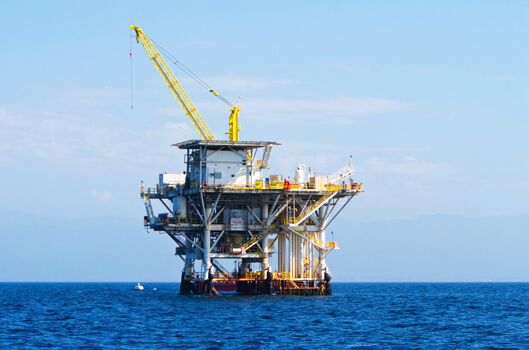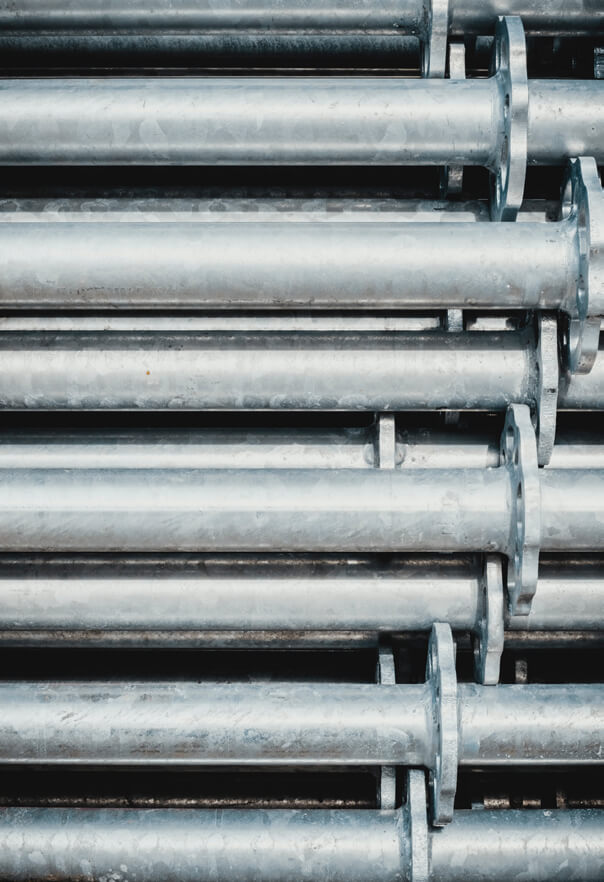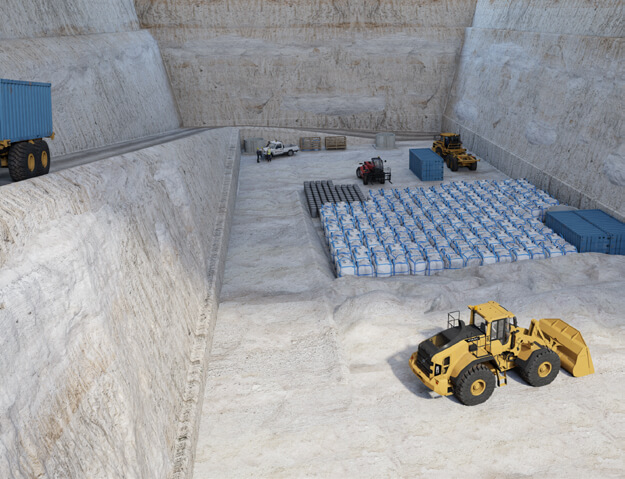PERMANENT ISOLATION OF HAZARDOUS WASTE USING GEOLOGICAL REPOSITORIES
Permanent Isolation (Disposal) of Hydrocarbon Based Wastes
THE PROBLEM WITH HYDROCARBONS
Hydrocarbon-based wastes are any materials consisting of, or contaminated with, hydrocarbons. They may possess a range of physical and chemical properties but are generally toxic and often flammable. As a result, they are difficult to handle and transport safely and are heavily regulated.
Historically, oil spills have proven that hydrocarbons have devastating effects on the environment, particularly on aquatic ecosystems. The oil forms a film over surfaces, coating animals in toxic sludge and preventing regeneration of dissolved oxygen in the water. This effect can destroy entire ecosystems.

Other problems relating to hydrocarbon wastes include:
- Unconfined volatile components may vapourise, releasing toxic volatile organic compounds into the air.
- Potential contamination with other wastes, such as heavy metals, polycyclic aromatic hydrocarbons (PAHs) and phenols which complicate treatment.
- Likely to contain substances classified as known, probable or possible carcinogens by the International Agency for Research on Cancer (e.g. PAHs).
Waste materials that consist of, or are contaminated with, hydrocarbons generally fall into National Environment Protection Measures (NEPM) Type J but also include Waste code N120 (soils). Typical examples include contaminated waste oils or fuels that are unfit for use, water or soil contaminated as the result of a spill and production sludges from industry.

HOW ARE HYDROCARBON WASTES CURRENTLY MANAGED?
Depending on the material in question, hydrocarbonbased wastes may be reprocessed and re-used, typically via dewatering, demineralisation, and/or rerefining. Unfortunately, significant quantities of these wastes are deemed too difficult, or too expensive, to treat and require disposal. Additionally, treatment processes typically generate hazardous residues, which must also be disposed of.
Hydrocarbon-based wastes are generally too hazardous for disposal via landfills, due to the risk of leachate formation and groundwater contamination. Disposal options for hydrocarbon wastes may include:
- Thermal techniques such as incineration or thermal desorption, which may be restricted depending on waste contaminants.
- Reprocessing and re-use, which may involve multiple treatments.
- Bioremediation, which is a slow process requiring significant management and often yields an incomplete treatment outcome.
KEY POINTS
- Hydrocarbon-based wastes may have multiple hazardous characteristics, depending on composition.
- Hydrocarbons have the potential to be extremely hazardous to humans and the environment.
- Wastes may be re-processed and re-used but this typically generates a hazardous residue requiring disposal.
TYPICAL DG CLASS
Wastes expected at Sandy Ridge may include a variety of DG classifications, associated with one or more of the following:
- Classes 3, 4 and 8
- Division 6.1 – toxic substances wastes that are not necessarily regulated via the ADG Code (e.g. combustible liquids)
IMMOBILISATION AND DISPOSAL OF HYDROCARBONBASED WASTES
Tellus intends to dispose of hydrocarbon-based wastes in accordance with the best practices described by the Basel Convention, particularly the Technical Guidelines on Specially Engineered Landfill (SEL).
These guidelines outline the technical and environmental considerations involved in designing, constructing and operating an SEL. As a geological repository, the Sandy Ridge Facility exceeds the requirements of an SEL.
The Sandy Ridge Facility will also incorporate an immobilisation treatment process to ensure that wastes meet Tellus’ Waste Acceptance Criteria (WAC), and to provide an additional barrier preventing the migration of hazardous materials over geological time.
Tellus’ immobilisation treatment involves locking the waste into a cementitious matrix and/or adsorbing it onto a suitable material. The process involves mixing the waste with appropriate ratios of binders and kaolin according to one of several formulations that Tellus has developed, to produce a solid, cementitious block. This block must be capable of withstanding the geotechnical conditions of the cell while immobilising the waste and its absorbed liquid.
Due to the dynamic nature of hydrocarbon-based wastes, Tellus has conducted several studies to develop multiple immobilisation formulations specific to hydrocarbon-based wastes. The most appropriate of which will be selected based on an individual waste’s characteristics.
The studies utilised waste samples of different viscosities and confirmed that the various formulations were effective at solidifying and immobilising the hydrocarbon wastes.
Tellus’ immobilisation treatment is generally not considered to be suitable for flammable materials, therefore, wastes classified as DG Class 3 may be required to undergo further treatment prior to acceptance at the Sandy Ridge Facility.



THE TELLUS SOLUTION
Tellus is currently developing storage, recovery, and permanent isolation infrastructure in the form of geological repository facilities supported by a “hub and spoke” logistics solution across Australia.

KEY CLIENT BENEFITS
Tellus offers simple, safe and cost-effective storage, treatment and permanent isolation (disposal) solutions for hazardous wastes.
Features and benefits include:
| Quality |
|
| Commercial and risk transfer |
|
| Functionality |
|
| Sandy Ridge availability and innovation |
|
| Regulatory approvals and licensing |
|
| Price |
|
